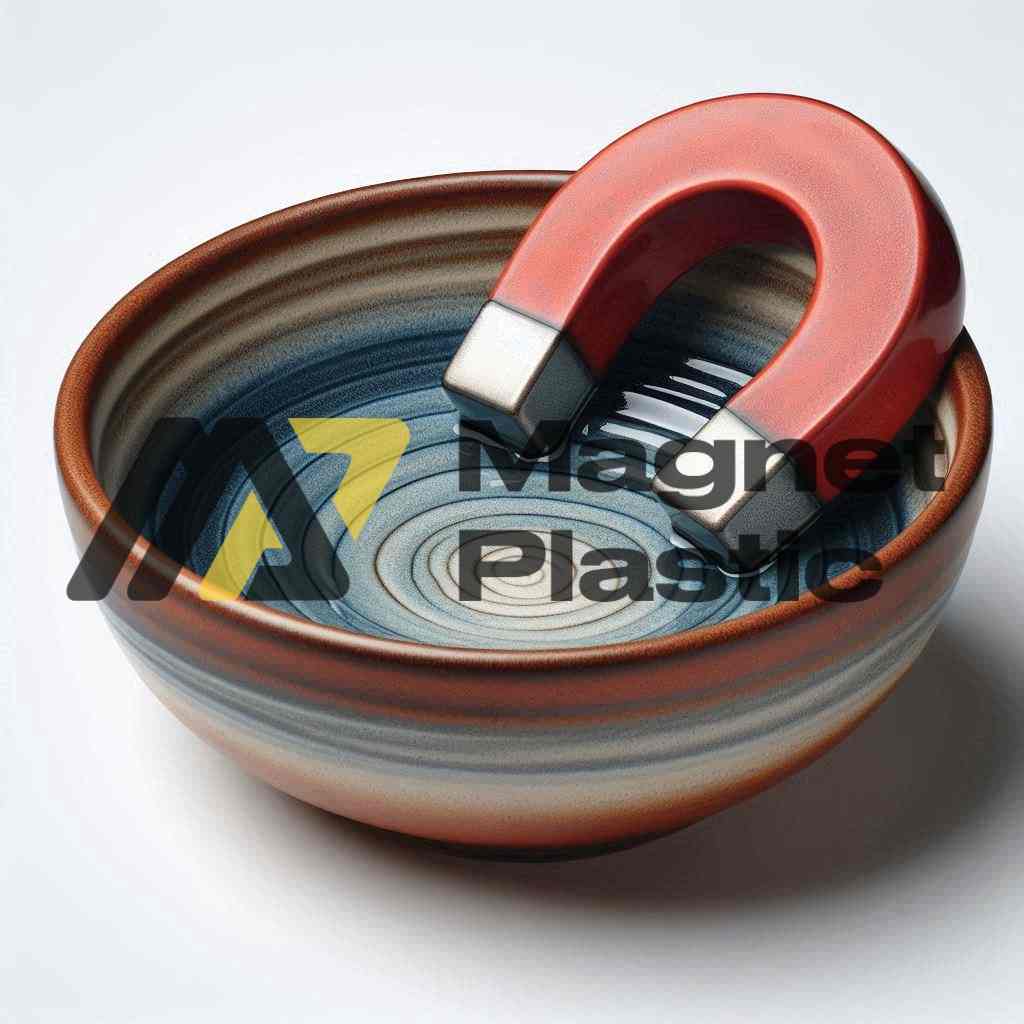Magnetic separation in ceramic processing
In ceramic production, the removal of impurities is critical to ensuring the quality of the final product. This is where magnetic separation in ceramic processing plays a crucial role, ensuring that raw materials are free of metal particles that could compromise both the aesthetics and physical properties of the ceramic. Magnetic separation helps achieve high standards of purity and durability in a variety of ceramic products.
The importance of magnetic separation in ceramics
During the processing stages of ceramic materials, such as grinding clays, feldspars and silicas, there may be contamination by metal particles from equipment wear or other external sources. These impurities, if not removed, can cause visible defects, decrease product strength and even cause firing problems.
Magnetic separation in ceramic processing prevents these drawbacks, effectively removing ferrous metal particles and other contaminants. This ensures raw material free of impurities, which helps maintain the quality of the final product and reduce wear on equipment, optimizing performance at each stage of production.
Magnetic separation technologies in the ceramic industry
Magnetic separation uses different types of devices adapted to the needs of ceramic processing and the size of the metal particles present. Among the most common systems for magnetic separation in ceramic processing are:
Magnetic drum separators: Mainly used to remove larger metal fragments, the drums rotate on conveyor belts, attracting and eliminating metal particles that could be harmful.
Magnetic filters: These devices are installed in production lines to capture smaller metal impurities. They allow a constant flow of material to be maintained, avoiding obstructions and delays.
Magnetic grids: Made up of magnetic bars, they are installed in hoppers or channels through which the material passes. They are effective in capturing fine metal particles in ceramic powders, achieving thorough cleaning.
High-intensity separators: For non-ferrous metal particles that are difficult to detect with conventional magnets, these high-power separators ensure the purity of the highest quality materials.
Key benefits of magnetic separation in ceramics
Magnetic separation in ceramic processing offers multiple advantages in terms of purity, cost and product durability:
Assured quality: The removal of metal contaminants results in pure ceramics with improved appearance, strength and durability, essential for products with high aesthetic or technical standards.
Longer equipment life: Removing metal particles reduces wear on equipment such as mills and presses, which prolongs their useful life and avoids costly downtime for maintenance.
Cost and time savings: The reduction of impurities optimizes production time and minimizes losses due to defective products, improving the profitability of the process.
Applications of magnetic separation in ceramic manufacturing
In the ceramic sector, magnetic separation is widely used in the production of tiles, tableware, china and other high-quality products. Magnetic separation is also essential in the production of specialized ceramics for industrial and electronic applications, where even the smallest particles can affect the performance and durability of the final material. Magnetic separation ensures that these products meet the highest standards of purity and functionality.
Conclusion
Magnetic separation in ceramic processing is an indispensable technology for the industry, providing quality, efficiency and safety in ceramic products. As this technology evolves, the ceramic industry benefits from more efficient methods, with improved quality standards, less wear on equipment and reduced costs. Magnetic separation continues to be a key solution to ensure sustainable and high-quality ceramic processing, adapting to the growing demands of the market.
